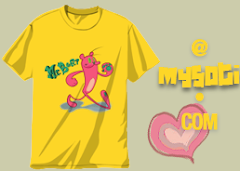
I was looking over some of these Heinrich Kley sketches from a recent ASIFA post and i noticed two things while perusing his sketches:
A) He seems to see the structure of the thing first and then sort of traces or with his actual line. (see above image) That's why he probably can draw his line's so freely and confidently. He knows where they are going already, so it's just a matter of adding flourish to it.
B) Sketches in general seem to contain nonexistent lines. By this i mean lines that are not actually visible in the physical thing you are drawing.

For example, in Kley's leopard here there are are lines whizzing about every which way up and down its tail and spin and around it's legs. The almost seem to indicate internal anatomy or just general line of action for different parts of the body. It's almost as if the artist is drawing path of some sort of metaphysical energy that isn't necessarily visible. Life itself!

I don't know what that circle in the hippo's neck is supposed to be but i sure does look exciting! And it doesn't look "wrong" or "bad".
If one were to make a polished drawing of these sketches These would probably be the first liens to get omitted as "unnecessary" clutter. However a lot of times when i do that with my won sketches (and i see it frequently in others too professionals even) it seems all-of a sudden less alive. "They" say the trick to making a finished drawing is to capture the same vitality of the sketch, but somehow i think it's impossible, because those superfluous lines are illustrations of the life energy itself. So any time you omit that are you necessarily making a less vital drawing? I've always had this saying that the best way to honor a spontaneous moment is not to capture but to create another one. So perhaps the best way to translate final drawing from a draft isn't to faithfully trace it but rather to use it as inspiration and guidance for your final set of lines.


2 comments:
In animation, tying down drawings spontaneously and following inspiration with inspiration would lead to volumes that don't work correctly in sequential movement.
It's important that each stage of a drawing... ruff to cleanup... include everything in the earlier stages and then ADD something to it. This doesn't necessarily mean to add unneccessary details. It means that the drawing should develop and become more refined.
A lot of cleanup ends up taking the life out of the original ruffs. Learning which lines are doing the work and which ones to leave out as you simplify and focus is the secret.
Of course, like all good secrets, it's neither simple nor easy. It takes thought and experience.
See ya
Steve
Yeah that's true. Maybe i see so few clean-ups that live up to the roughs. I guess that just proves that it is a very difficult skill to hone. And that assumes that the roughs are quality to begin with.
Post a Comment